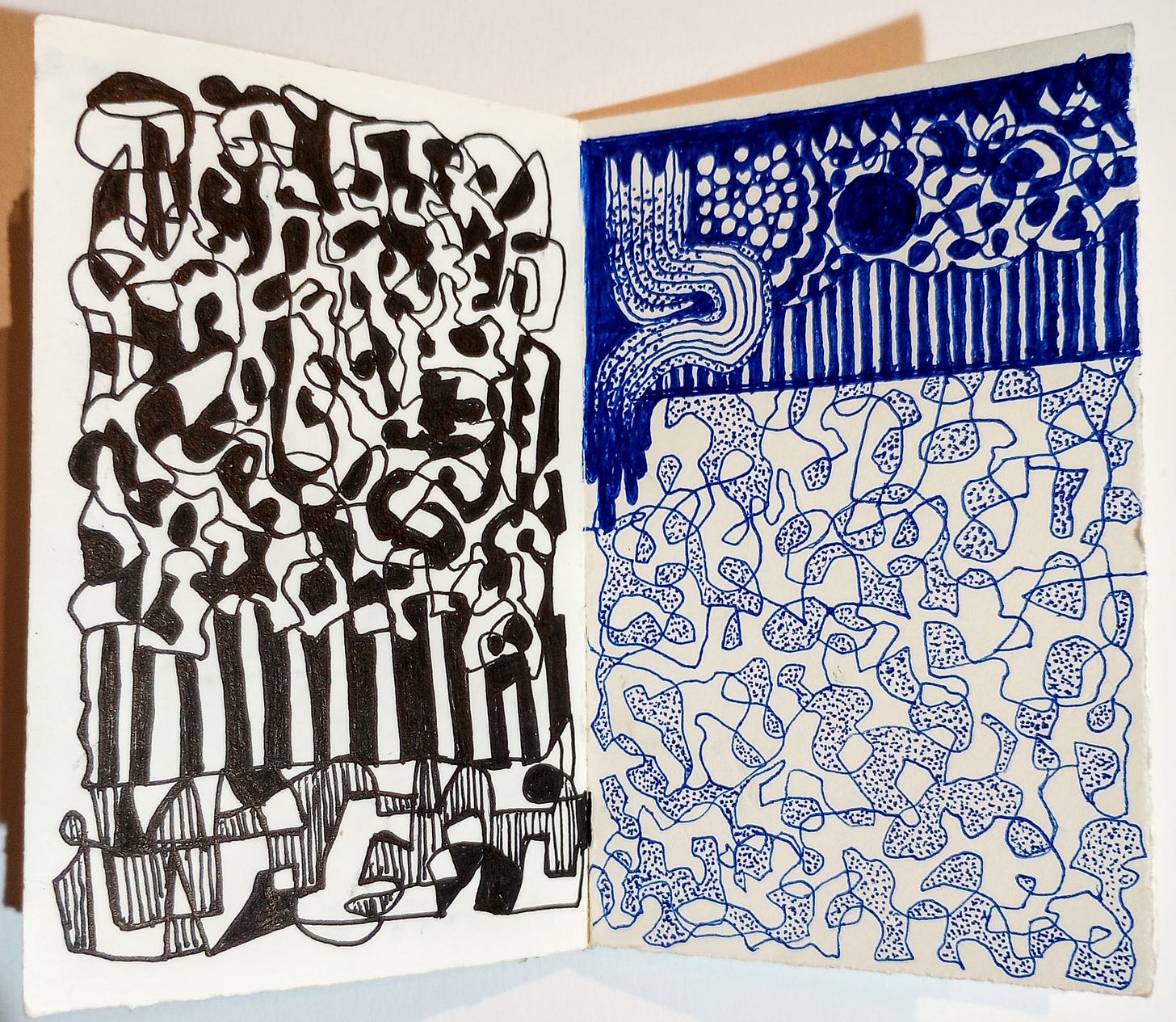Alas, Poor Art(e)
No. 199: Arte Povera, Sketchbook Art (mine), Robyn McClenden, Giovanni Aloi, Mona Caron, Nakem Pedagogy, "Juxtapose" (Stephanie Langley & Robert Armstrong), and Jacob Collier
THEN & NOW
I’ve had a very busy and somewhat stressful week. Accordingly, I’m giving myself some “breathing space“ (i.e., a break) around the Letter Project. But I’ll definitely return to it soon.
In the meantime, I’ve been thinking about Arte Povera and the use of “humble materials” in making art. I think that mail art,1 in “collaboration” with the postal system, can easily fit into this paradigm. My undergrad and graduate education was all about literature and writing. I was also interested in visual arts, but I did not attend art school, so—although I’d heard about the Arte Povera movement—I only recently became interested in learning more about it.
Naturally, I started my search online, and have included two videos on Arte Povera in the Rabbit Hole section below: one by collage artist Robyn McClendon, and the second is a talk by Dr. Giovanni Aloi, who gives a good overview of the art movement.
ART
Recent “automatic art” and collages, both in my tiny handmade sketchbook:
RABBIT HOLE
Artist Robyn McClendon: “Why I make poor art” (Arte Povera):
Author and curator Giovanni Aloi gives a fascinating overview of the Arte Povera movement, its varied expressions and aims:
See also Aloi’s new book Botanical Revolutions, on plants and art: “a global history of plants in art, focusing on the crucial moments that signaled the formation of new movements and styles, as well as the creation of media that could not have occurred without the involvement of and interaction with the vegetal world”:
Mural artist Mona Caron creates gigantic, “heroic” murals of single weeds, which she admires for their resilience, despite attempts to exterminate them from our cities and neighborhoods.
In the World.org article, “A muralist is painting weeds to represent the margins of society,” Caron is quoted:
In Union City, California, [Caron] picked the very first flowering plant that came back to the devastated terrain of a former superfund site. She said "Ok you’re the one. You’re the one who’s gonna be seven stories tall."
Salamat2 to poet Catalina Cariaga for introducing me to the “Nakem Pedagogy” of Jeffrey Tangonen Acido. His essay presents a different view of education and teaching that I wish I’d had when I attended UC Berkeley in the 1990s. Also thinking of two important classes I attended in the 1990s that, in retrospect, seemed to align with Acido’s pedagogical praxis: a class on the Black Mountain poets by African American poet Nathaniel Mackey, and a UC Berkeley graduate seminar taught by Dr. Oscar Campomanes on Bakhtin and the Carnivalesque in Rabelais’ Gargantua and Pantagruel.
If you are in the Monterey/Carmel area soon, check out a great art show, Juxtapose, at the Carl Cherry Center, June 20—July 26, featuring Stephanie Langley and Robert Armstrong!
SOUNDINGS
Jacob Collier performs a moving cover of Björk’s "Hyperballad" for Mahogany Sessions:
My gratitude goes to everyone who reads Eulipion Outpost regularly, and especially to those who have subscribed or donated on my Ko-fi page to support my efforts.
My ongoing appreciation goes to the Mysterious M. for his excellent editing skills.
Website and blog: Jeanvengua.com
A Crooked Mile (a blog)
CommonwealthCafe (Filipino American & AAPI history and print culture)
Eulipion Outpost is a reader-supported publication. To receive new posts and support my work, consider becoming a free or paid subscriber.
Notes:
I’ve mentioned mail art, and shown some of my own, in this newsletter several times. Using the postal system, mail art is "an alternative means of producing, distributing, and receiving art.” (Smithsonian Institution).
Salamat: “Thank you” in Tagalog.







Thank you for mentioning Nakem pedagogy. I looked it up and it is interesting. I think back to my exclusive Catholic girls high school education and the allusion to the four walls definitely hit home.